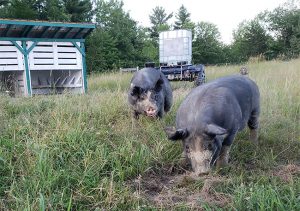
When processing a hog, understanding weights and yields is essential for estimating the amount of meat you’ll obtain and determining the storage space required. Here’s a breakdown of the key metrics and factors that influence pork yields:

Key Terms to Know:
- Live Weight: The animal’s weight before slaughter.
- Hot Carcass Weight (HCW): The weight after slaughter with internal organs and head removed but skin intact; also known as hanging weight.
- Dressing Percentage: Calculated as
(HCW ÷ Live Weight) × 100, this indicates the carcass’s proportion relative to the live animal. - Cold Carcass Weight: The weight after the carcass has been cooled, typically slightly less than HCW due to moisture loss.
- Cooler Shrink: Weight loss from evaporation during the cooling and aging process.
Factors Influencing Yields:
Hogs may lose 0.69% to 1.95% of their live weight during transportation due to excretion and dehydration. To minimize this, producers can:
- Reduce animal stress during transport.
- Provide ample fresh water prior to transportation.
- Transport during cooler times of the day.
Large-scale processing facilities often use spray chilling to reduce cooler shrink to less than 1%. Smaller operations may experience higher shrinkage, typically around 3–5%, due to increased airflow and the absence of spray chilling systems.
Typical Dressing Percentages:
The dressing percentage for hogs usually ranges between 70–75%. For example, a 250-pound live hog with a 72% dressing percentage would result in a 180-pound hot carcass. After cooling and further processing, the retail cuts—such as ham, loin, Boston butt, picnic, ribs, and belly—constitute about 57–70% of the live weight. Variables such as breed, diet, and processing methods can influence these numbers.
Practical Implications:
Understanding these metrics allows producers to accurately estimate meat yields and plan for sufficient storage capacity. It also helps in managing expectations when working with processors and customers.
For a more detailed explanation of pork yields and processing, visit the University of Maine Cooperative Extension’s publication on pork yields.





